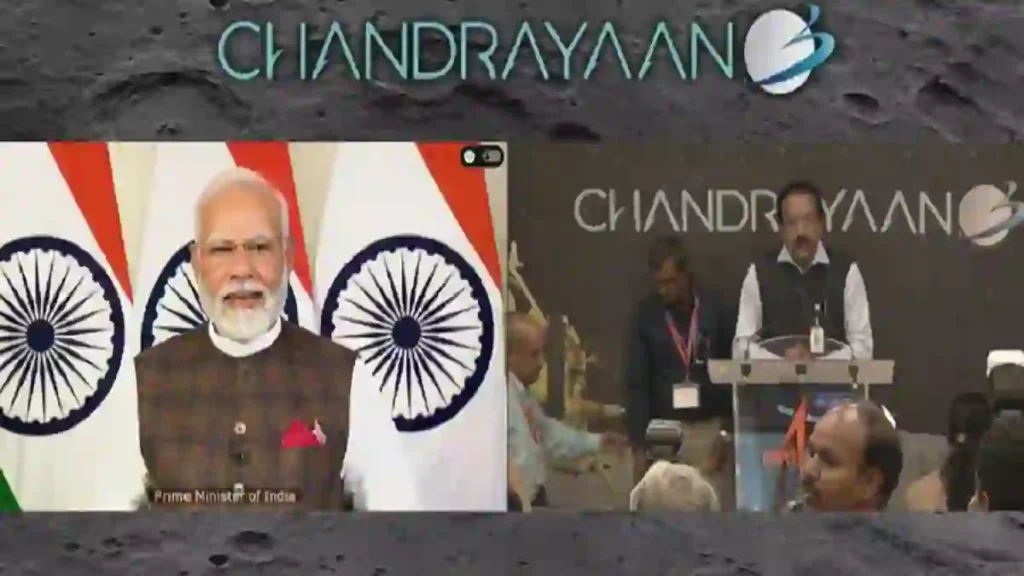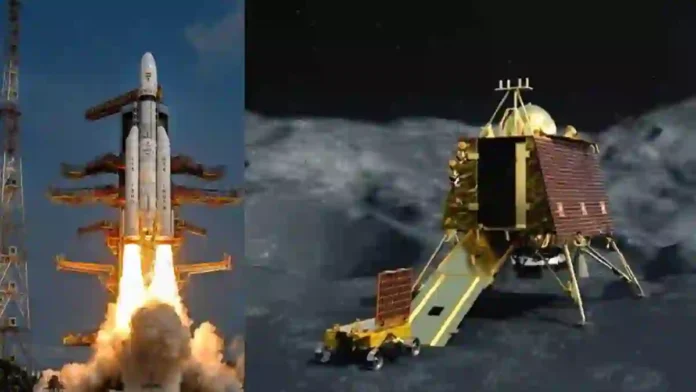Sources – Indianexpress
Sources – Indianexpres
India created history. India’s Chandrayaan-3 lander Vikram has successfully landed on the moon. India writes history as first country near lunar south pole.
After a 40-day journey starting from the Satish Dhawan Space Center in Sriharikota, the Indian Space Research Organisation’s (ISRO) Chandrayaan-3 mission has landed successfully. The Vikram lander made a soft lunar landing at 6.04 PM IST on August 23.
ISRO started the automatic landing sequence at 5.44 PM IST. The Vikram lander is now using its onboard computers and logic to try to make a soft landing on the Moon. While mission controllers at ISTRAC will monitor it closely, the onboard systems of the lander will be doing all the heavy lifting.
The Chandrayaan-3 mission is the follow-up to the Chandrayaan-2 mission of 2019, when the Vikram lander crashed into the lunar surface. The primary objective of the mission is simple—showcase the space agency’s capability to complete a soft-landing on the Moon. With the mission, India has joined a small and exclusive club of countries that have managed to soft land on the Moon. So far, the club has three members—the United States, the Soviet Union and China.
Prime minister congratulates team in address
Prime Modi congratulated ISRO scientists for the success of the mission while speaking immediately after touchdown from South Africa. Says India is on the moon, adding that the success is a sign of a developed India “India’s successful moon mission is not just India’s alone, he said. According to Modi, success belongs to all of humanity and will help future moon missions of other countries.
ISRO chief thanks team
ISRO chairperson S Somanath congratulated project director P Veeramuthuvel, assistant director Kalpana, mission director Srikanth and URSC director V Sankaran for the success. Chandrayaan 3 project director P Veeramuthuvel reiterated how ISRO is the first to land near the south pole of the moon. “Most memorable and happiest moment,” added assistant director Kalpana.
The Indian Space Research Organisation’s second attempt at a soft landing on the Moon, Chandrayaan-3 was launched on 14 July 2023, at 2:35 pm IST as scheduled, from Satish Dhawan Space Centre Second Launch Pad in Sriharikota, Andhra Pradesh, India.
Chandrayaan 3 mission objective
The Chandrayaan-3 spacecraft is carrying many science payloads that will help scientists here on Earth understand the Moon better. But the main objective of the mission is to successfully carry out a soft landing on the Moon.
This is the same objective as the mission’s predecessor, Chandrayaan-2, which failed during the last leg of the mission, with the Vikram lander crashing on to the lunar surface. If ISRO gets it right with Chandrayaan-3, India will be just the fourth country to do a soft landing on the Moon after the United States, the erstwhile Soviet Union, and China.
Beresheet, an Israeli private company-led mission failed to do the same before Chandrayaan-2’s launch. Hakuto-R, a mission led by Japanese private space company Ispace also failed to complete a soft landing on the Moon earlier this year.

Chandrayaan 3: LVM-3 rocket
The Chandrayaan-3 mission will be launched into space by the Launch Vehicle Mark-III, (LVM-III) which was earlier known as the GSLV (Geosynchronous Satellite Launch Vehicle) Mark-III. This will be the fourth operational mission for the launch vehicle.
It is powered by two S2000 solid rocket boosters that will provide the thrust required for takeoff. After the solid boosters separate from the launch vehicle, it will be powered by L110 liquid stage. After the separation of the liquid stage, the CE25 cryogenic stage will take over.
Chandrayaan-3 mission modules
The main Chandrayaan-3 spacecraft consists of three modules—the lander module, a propulsion module and a rover module. The propulsion module will carry the spacecraft from an injection orbit around Earth till a 100-kilometre lunar orbit. While that is its primary function, the propulsion module will also be carrying a payload that will take spectral and polarimetric measurements of Earth from a lunar orbit.
The lander will be carrying the RAMBHA-LP, ChaSTE and ILSA scientific payloads while the rover will be carrying APXS and LIBS. The lander weighs approximately 1,750 kilograms including the rover, which weighs 26 kilograms by itself. The lander measures about 2 by 2 by 1.1 metres while the rover measures about 91 by 75 by 39 centimetres. Both the rover and lander have been designed to operate on the Moon for about 14 days.




